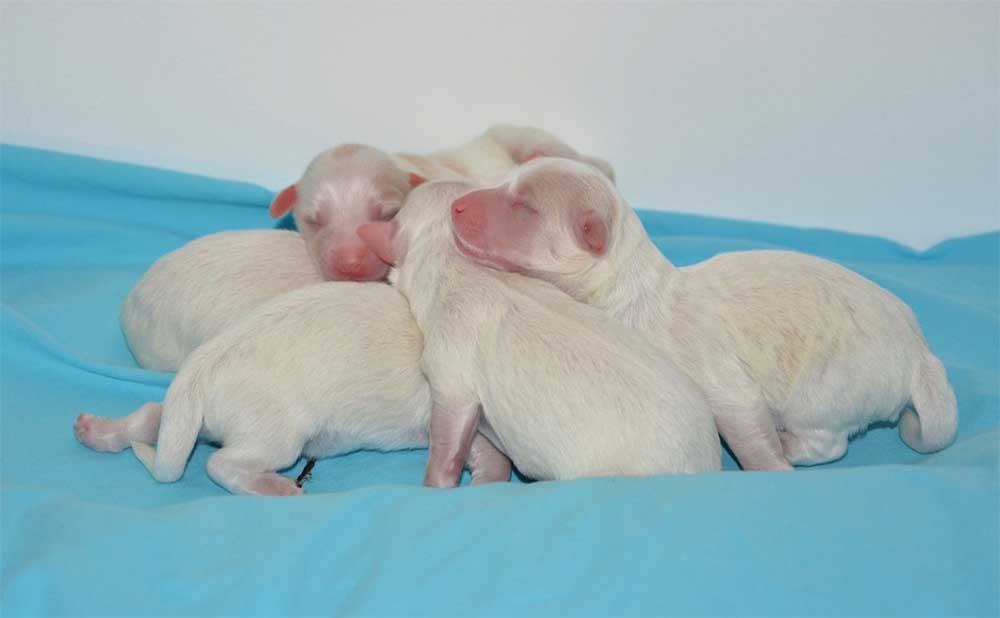The runt of the litter is known to typically the one that is the smallest among the litter of puppies, and it is therefore likely to be both the smallest and the weakest.
However, there are a lot of misconceptions surrounding the runt of the litter, and lots of the information that is floating around simply isn’t true.
If you are wondering whether you are alright to purchase the runt of the litter, there are some things that you will need to know about. It is also worth finding out what of the information surrounding the runt of the litter is true, and what is false. This will help you to understand what to expect, and not to worry about things that simply aren’t true.
In this article, we are going to tell you everything that you might want to know about the runt of the litter, and we will even debunk some myths along the way. Something that a lot of people are wondering is if the run of the litter is more aggressive, and this is a question that we are going to answer for you here.

Are the Runts of the Litter More Aggressive?
The runt of the litter is typically thought to be more aggressive, but this is not always the case.
There are lots of things that can influence how aggressive a dog is, like genetics, training, and their general upbringing, but there is no evidence to suggest that all runts of the litter are going to be aggressive.
Many studies have taken place to find out if the runt is more aggressive, but more often than not, they are not aggressive.
Do the Runts of the Litter Need to Be More Aggressive?
It is also thought that the runt of the litter will need to be more aggressive in order to survive. If the run of the litter is the smallest, then maybe this aggression will give them a fighting chance.
Although this might not be entirely true, it can be possible that the runt is overlooked at times, and perhaps he might have to put in a bit more effort to get to the milk from the mother.
Even though this could be the case, it does not mean that the runt will grow up to be an aggressive dog.
Why is There Always a Runt of the Litter?
There are lots of reasons that could explain why there is always a runt in every litter, and we will explain some of them for you below. The runt is usually the smallest member of a litter, and they will weigh the least.
There are some that would suggest that the runt of a litter will be positioned at the middle of the Y of the mother’s womb, which makes them further away from the nutritional blood supply that supports all of the puppies.
Being both the smallest and the lightest of the puppies, the runt might not be able to suck milk and access the colostrum that is produced immediately after birth by the mother.
As well as having to miss out on vital nutrients, colostrum also contains essential antibodies that help the newborn puppies to fight off infections and diseases in their first few weeks of life.
What Happens To Runts Of The Litter After They’re Born?
Once the runt of the litter has been born, the odds will be stacked against them, and they might need additional help in order to survive. All new puppies will rely on the help and support of their mother for the first few weeks of life, but if the litter is quite large, it can be difficult for the puppies to receive equal amounts of attention from the mother.
When it comes to feeding time, all of the puppies will make their way to the mother to feed and get the nutrition that they need. However, the runt of the litter is smaller and more likely to be pushed off by another puppy.
If this does happen, then the breeder may need to step in to help the run. The runt will get the most benefits from feeding closer to the mother’s tail, as this is where the milk will be the richest. Without the help of the breeder, it is possible for the mother to give up on the runt, especially if the litter is larger.
Will the Runt of the Litter Grow Normally?

The runt of the litter will usually grow to the same size as the others of the same litter. However, it is possible for the runt to remain the smallest for a longer time, though they will catch up when they start to receive the attention and care that they need.
Once they reach adulthood, hey are likely to be the same size as the other dogs, as long as they have been properly fed and cared for.
This could happen naturally through the help of the mother, or the runt could require human assistance. It will all depend on the individual circumstances. It is worth being aware of the face that there are some runts that can remain more vulnerable even in adulthood, but this might not always be the case.
Is the Runt Ever the Biggest of the Litter?
The runt of the litter will never be the biggest when they are firstborn, but they can grow to be the biggest when given the chance. This will all depends on different factors.
For example, if the runt of the litter is born from a stray dog, it is more unlikely for them to get the food that they need for growth and nutrition. However, if they are adopted by someone that can help them and care for them, they could start to outgrow their siblings with a proper and balanced diet.
If the runt of the litter is receiving a little bit of extra care and attention, they will be able to grow bigger and stronger. They will be able to catch up to the other puppies in no time. The amount and type of food that they are fed when they move on from milk can also influence their growth.
Runt Of The Litter Health Problems
Unfortunately, the only downside to the runt of the litter is that they can be more susceptible to certain health issues than their siblings. There are some runts that will go on to live long and healthy lives with the right care, but there are also some that will not.
The most important thing to make sure that they get is their mother’s milk when they are first born, as it contains important antibodies that are designed to protect the puppies until their immune system develops. This, combined with their vaccinations, will offer them the best possible levels of protection.
If the runt of the litter does not get this milk, then their body will become much weaker, and they will be more likely to develop things like infections and other illnesses. This could even end up killing them in the worst scenarios.
Once the runt of the litter has been born, the biggest challenges that they will face are dehydration and hypothermia. These are things that can easily kill the runt, which makes milk even more important for hydration. They also need to be kept warm at all times.
In Summary
It is just as possible for the runt of the litter to be aggressive as any of the other puppies in the litter, but the runt might have to fight a little bit harder to survive.
There is no way to know for sure that the runt of the litter would or wouldn’t be aggressive, as it all depends on their individual circumstances.
Although, with the right care and assistance, they can grow to be just like any other dog.
